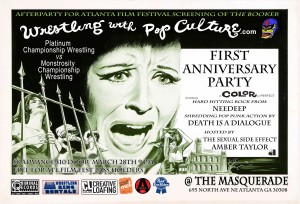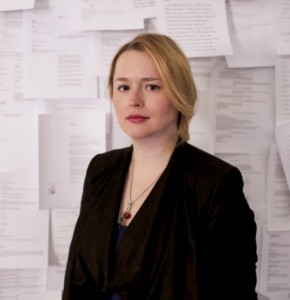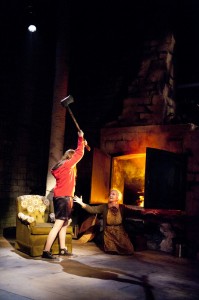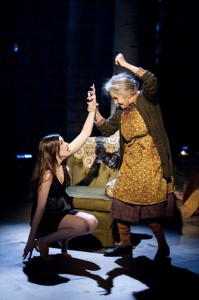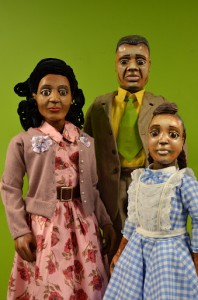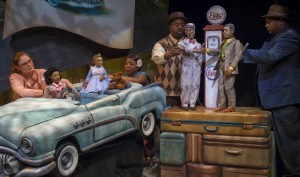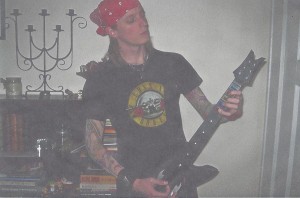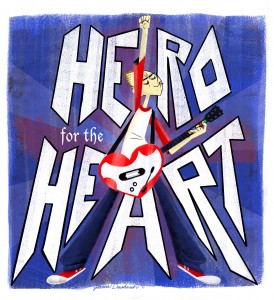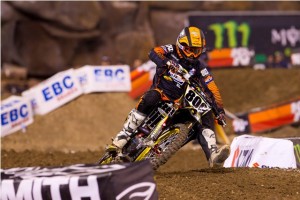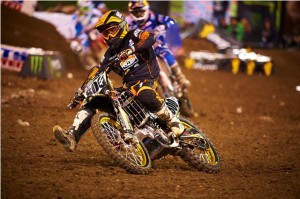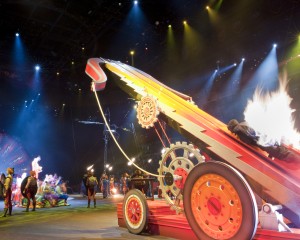When it comes to Americana, even a tornado would have a hard time uncovering a story as ingrained in American pop culture as The Wizard of Oz. Though this tale has been told in multiple ways since the 1900 publication of the L. Frank Baum-penned The Wonderful Wizard of Oz, it’s the 1939 Metro-Goldwyn-Mayer film starring Judy Garland that has taught most of us that it’s fun to follow the proverbial yellow brick road, but there is ultimately no place like home. Through March 11, the Alliance Theatre will be taking theatergoers over the rainbow in a production that is loyal to the film while also putting its own folk art twist on the tale. From the patchwork pattern that covers the stage floor to the Altoids-tin abdomen of the Tin Woodsman, this version definitely borrows heavily from its surroundings while paying homage to what has become one of Hollywood’s most memorable films. Director Rosemary Newcott (the Alliance’s Sally G. Tomlinson Artistic Director of Theatre for Youth) takes a moment to talk to Wrestling with Pop Culture about the folk art influences of the play and more.
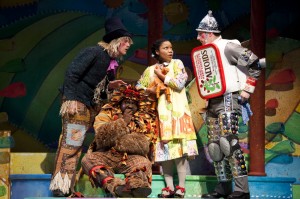 Your interpretation of The Wizard of Oz is very loyal to the 1939 movie, but it also puts a folk art visual spin on things. That actually seems like a natural fit, but why did you choose to incorporate folk art into the production? Were there any challenges in doing that?
Your interpretation of The Wizard of Oz is very loyal to the 1939 movie, but it also puts a folk art visual spin on things. That actually seems like a natural fit, but why did you choose to incorporate folk art into the production? Were there any challenges in doing that?
I’m married to a folk artist, so it’s all over my house and I look at it all the time. When you’re looking to design a show you’re always looking at what possible ways you can go, especially when you’re taking an iconic movie like that. You can’t put the film on the stage. So between looking at my husband’s art and basically playing off the Tin Man, who is a piece of folk art as he originally existed – and even if you look at Baum’s drawings there’s some kind of folk art sensibility to his original illustrations – that connection was what inspired this show.
He was about Americana and sought to create this American fairy tale when he wrote The Wizard of Oz. One of my earliest memories is seeing that MGM movie with my family. Talk about pop culture, that film’s images and lines and characters are so integrated into who we all are, certainly on a national level but even internationally, that particular movie and story has just been so constant. In the long run, it’s about how a family and how relationships work, where you find your home and what’s important to you. From that perspective, it’s very connected to the way that a folk artist uses the elements around his or her home to create. When we looked at that, which is just taking out of the earth and creating from wherever you live, it seemed to be such a perfect connection to what that story is.
The Wrestling with Pop culture logo by KRK Ryden has a yellow brick road-like path leading into a giant luchador’s mouth. So I definitely understand how much this story is part of pop culture.
I get it! And it’s so funny, I directed a show in La Jolla, California called Frida Libre. It’s supposed to be Frida Kahlo as a young girl and this other character is aspiring to be one of those Mexican wrestlers. So we played around with that imagery a lot. Of course, out there every other child was Mexican so they really loved it.
You mentioned that your husband is a folk artist. What’s his name?
His name is Tom Marquardt, but he’s got an art name which is TMarq.
You mean like a wrestling gimmick?
Yes! It’s his other persona. He used to do a lot of folk art festivals, but he’s not doing so much of that anymore because the market’s so bad. We did get up to Paradise Garden and got to meet Howard Finster. His persona actually greatly inspired Brandon O’Dell’s Wizard. He watched a lot of videos of Finster and rather than going for the guy in the movie, we just went for more of a Finster-looking gentleman, which is where the costume designer went.
There are some obvious differences between the cast of the movie and the cast of your play. Was that done intentionally to stay with the folk art theme or was it just a matter of who had the best audition?
My mind is always somewhat partial to multicultural casting because I feel like probably 80 percent of my school audiences are African American. We all want to see ourselves up there, but because folk art reflects home, I felt like that needed to be there because that diversity is so reflected in our culture. I would have been even more diverse if I could. There are certain conditions of singing, dancing and acting that you need to have in there, too. But I’m grateful for the amount of talent this city is providing, especially with a lot of actors who are also talented musically. The amount of young people who are triple threats is growing, which is outstanding.
The entire cast is very good, but Brad Raymond as the Cowardly Lion stands out quite a bit.
He’s quite wonderful, and he’s not Bert Lahr. When I first got into that audition process, almost everyone was coming in and trying to do Bert Lahr imitations. You can’t do that! So it was great when Brad came in with something that was uniquely his own twist on it, even though it sort of honors Bert Lahr in some respects.
There are certain parts of the movie that you obviously can’t recreate in this setting, such as when the Wicked Witch of the West catches the Scarecrow on fire, or the Witch having an entire army of green guys. But you captured the feel of the movie without having little people in the cast. Did you have the idea to have puppets and other tricks from the beginning?
It was abosolutely part of the plan, but very tricky. I’m grateful to have Reay Kaplan and Patrick McColery, who have both puppeteered extensively. And Michael Haverty, who did this amazing piece based on Alice in Wonderland that was about his mother at 7 Stages last year, helped us with conceptualizing the puppets. We started brainstorming for this a little less than a year ago. We’d just gather at my house, look at folk art and talk about how to invent this in a way that honors the movie and can still represent that populous. Munchkinland was the trickiest one because it’s a whole culture of little people. If I could cast children, I would. But I can’t, so this was the only way to go. The invention happens because of your limitations, so it reminds me of folk art in that we were taking what little we had and creating from it. The resources at the Alliance obviously helped, too. I’m grateful for the artists and they take such pride in it. It really took a while to evolve Toto because he is handled so much in the show, but I love what they came up with.
 The show wraps up this weekend. What do you have planned after that?
The show wraps up this weekend. What do you have planned after that?
We’re taking it on tour to LaGrange and that will be fun for the kids and families out there. It’s at a school that can accommodate some of our scenic elements, but we can’t bring all of them. Hopefully it will be something we can pack up and revive. It’s so connected to everybody I hope it’s something we can bring back.
Right now I’m developing a new piece for our Theatre for the Very Young component, which serves 18-month-old to 5-year-old children. It will play in the Black Box Theatre on the third floor of the Alliance. It’s amazing for me because how do you entertain 18-month-old kids? It’s very installation based and very hands on. They wander right into the space and they’re part of the show. I’m partnering with Lauri Stallings from gloATL for The Tranquil Tortoise and the Hoppity Hare. It’s kind of a dance piece created specifically for younger kids.
Right after that I’m off to The Kennedy Center to remount a production called Knuffle Bunny by Mo Willems, which is a piece about a baby and her Knuffle Bunny. Then who knows what’s next? There’s always something cooking up.
For more information, go to www.alliancetheatre.org.

